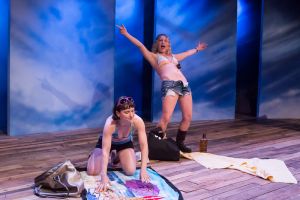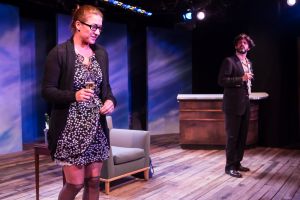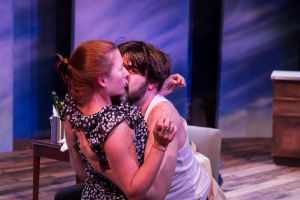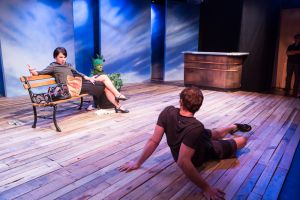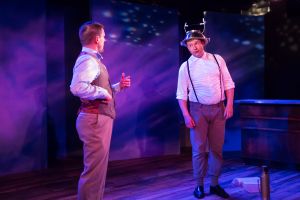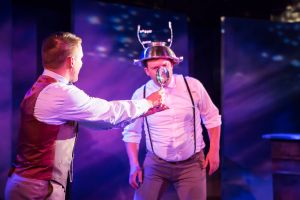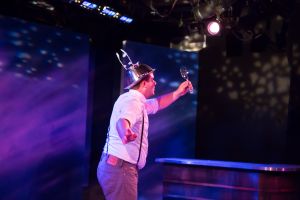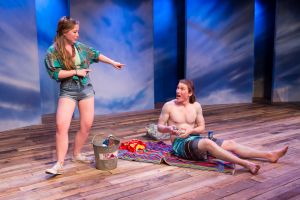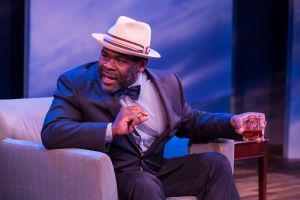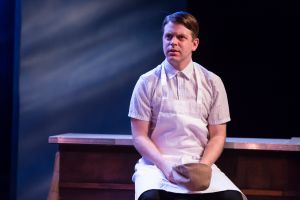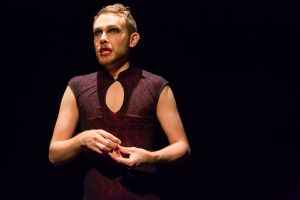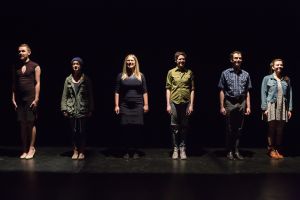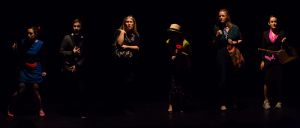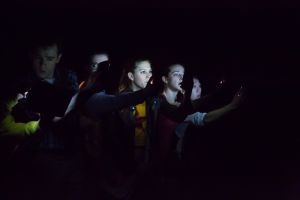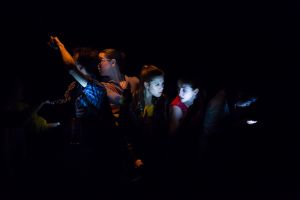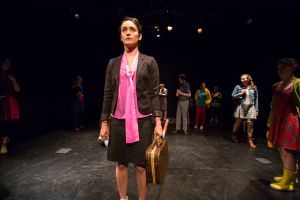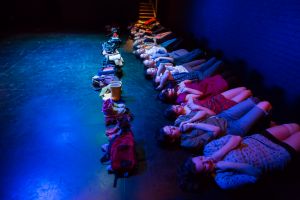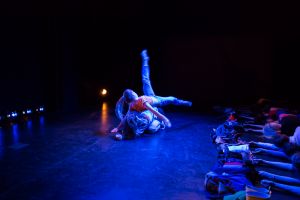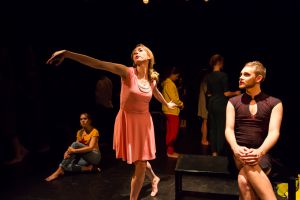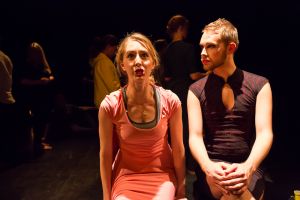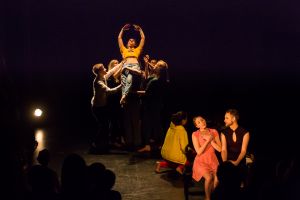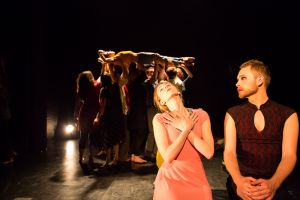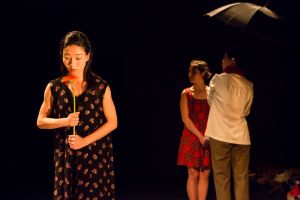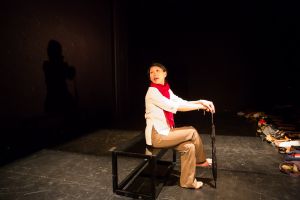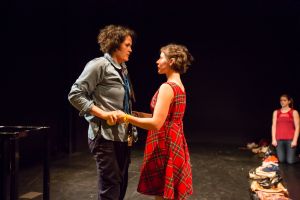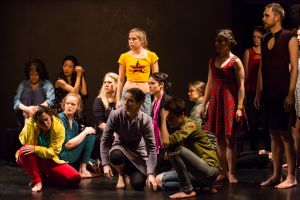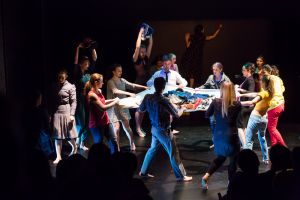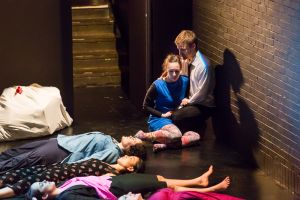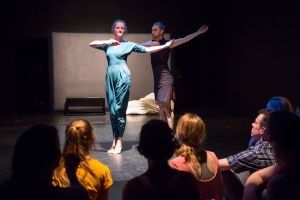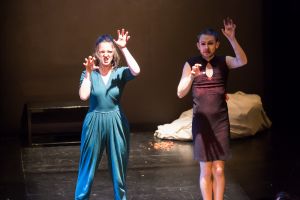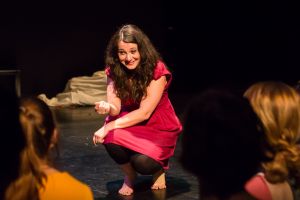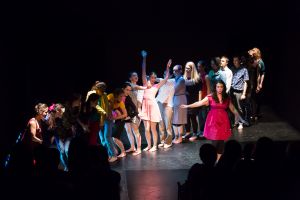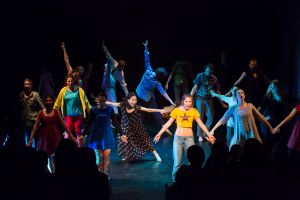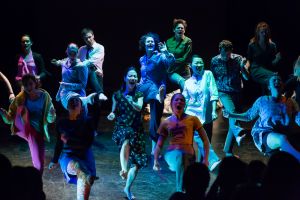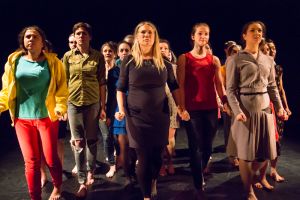The latest installment in Nylon Fusion Theatre Company’s This Round’s on Us series featured 10 plays loosely inspired by the theme of spring break. Nylon Fusion and I have a great photographer/theatre relationship, but they came and saw me in The Merry Wives of Windsor last year and realized I can act, too! Now things are complicated. They want me to shoot the show, but they want me to act, too! So you will only see 8 of the 10 shows that were presented. The other two were right before mine and mine. Sorry, guys. Maybe I’ll wear a GoPro next time, like I did for a certain zombie project…

Photo by Lori Kee
We were back in T. Schreiber’s Gloria Maddox Theatre and I was still trying to find a good location for shooting. Luckily, with the purchase of the EF 16-35 mm f/2.8 L II USM, I had a few more choices, in this very shallow, but wide space. I ended up on the furthest house left, front row seat, on the tip of the shallow U that makes up the audience. The 24-70 mm still saw the most use, but I was glad to have the 16-35 mm at a few points — about as many as the 70-200 mm. It wasn’t a bad location, unless actors weren’t cheating out when they were stage right. Know where the camera is, people! 🙂
The lighting at the Maddox remained quite nice to work with — even the darkest play, about a man counting stars, was lit enough to not have to resort to extreme measures. In fact, I was able to drop the ISO to 3200, well below the 5000 & 6400 I was using to shoot SITI Conservatory’s “Darth Vader” show. As I mentioned in that post, I had changed to Spot Metering, due to the high contrast in lighting. I probably should have moved back to Evaluative Metering for this show, since the lighting was more even here, but it wasn’t a big hindrance (again, it’s a suggestion from the camera, it doesn’t actually affect any settings).
